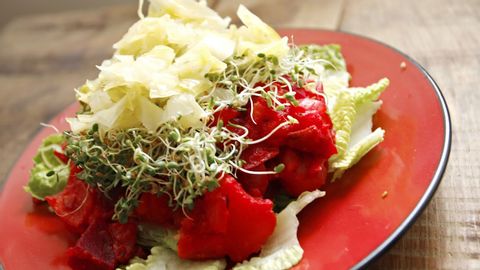
Subtitles & vocabulary
Recipe With Sauerkraut - Healthy Vegan Recipes On Video
00
Hhart Budha posted on 2014/06/10Save
Video vocabulary
good
US /ɡʊd/
・
UK /ɡʊd/
- Adjective
- Proper, appropriate or right
- (Of an amount) enough; plenty
- Uncountable Noun
- Advantage or benefit
A1TOEIC
More recipe
US /ˈrɛsəˌpi/
・
UK /'resəpɪ/
- Noun
- Conditions likely to create a particular result
- Directions for making a dish, with the ingredients
B1
More bite
US /baɪt/
・
UK /baɪt/
- Noun (Countable/Uncountable)
- Amount of food taken into your mouth at one time
- Wound left from being bitten
- Intransitive Verb
- (E.g. of fish) to take bait and be caught
A2
More add
US /æd/
・
UK /æd/
- Transitive Verb
- To include as well
- To put two things or numbers together, e.g. 2+2
A1
More Use Energy
Unlock All Vocabulary
Unlock pronunciation, explanations, and filters
